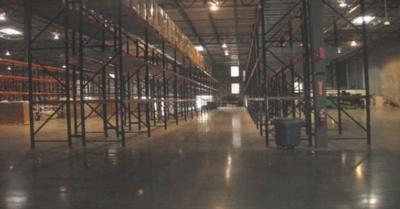DHS OIG Audit Of TSA Logistics Also Uncovers Unused Storage Space
An audit conducted by the Office of the Inspector General of the Department of Homeland Security shows that TSA is spending some $800,000 to store obsolete and unused equipment, and says it could put the money it's using to lease warehouses to better use.

"Although TSA has improved accountability of screening equipment at the Logistics Center, its plans and procedures for inventory management need additional improvements," the OIG writes in the executive summary. "Specifically, TSA stored unusable or obsolete equipment, maintained inappropriate safety stock levels, and did not develop an inventory management process that systematically deploys equipment. Additionally, TSA did not use all storage space within the Logistics Center."
The OIG said that it made two recommendations to TSA that would assist in warehouse management. The reports says TSA concurred with one, and partially concurred with the other.
The report says that TSA indicated that it was planning additional improvements to warehouse operations, and determined that it will not need one of its three warehouses after January 2013, when the lease expires, and in July 2012 it drafted a plan to reduce leased space. Allowing the lease to expire will reduce TSA’s warehouse annual lease costs. Additionally, TSA drafted a revision of its Security Equipment Management Manual to include additional guidance on managing warehouse space and inventory.
The OIG's two recommendations were for TSA to implement detailed inventory management procedures for equipment at the Transportation Security Administration Logistics Center, and develop and implement procedures to assess and adjust warehouse space on an annual basis.
In responding to the recommendations, TSA said that the OIG "did not sufficiently recognize warehouse space requirements fluctuate. TSA further explained that a 2011 report on warehouse space usage shows only 1 percent of warehouse space was unused. In its comments, TSA did not recognize that the component used the Logistics Center to temporarily store equipment funded by the American Recovery and Reinvestment Act of 2009 instead of directly shipping the equipment from the manufacturer to the airports. In its February 2013 update to the Security Equipment Management Manual, TSA emphasized that component personnel should ship property directly from the manufacturer to the airport sites whenever possible to minimize the use of the Logistics Center as an interim staging location. This process should lessen large fluctuations of equipment in the warehouse."

In response to the first recommendation, TSA said it has adopted and implemented an inventory management policy to issue equipment on the first in-first out basis. Additionally, TSA instituted weekly procedures to identify and highlight for action safety stock not in deployable condition. OIG says that TSA’s actions are partially responsive to the recommendation, but the comments did not fully address actions TSA will take to minimize the storage of unusable or obsolete equipment. The recommendation will remain open and unresolved until TSA provides additional information
For the second recommendation, TSA said it "partially concurs." The agency says that it understands the need to reassess warehouse space requirements annually and will implement that portion of the recommendation. However, TSA identified constraints where adjusting leased warehouse space on an annual basis may be infeasible. The OIG responded that TSA’s planned actions sufficiently address the recommendation, and recognizes that the agency should honor contractual commitments for agreed-upon periods. "With the implementation of annual warehouse space assessments, TSA should be able to better plan for short- and long-term warehousing needs. The recommendation will remain open and unresolved until we examine the approved policy and procedures for conducting annual assessments," the OIG concluded.
(Images from the DHS OIG report)
 Airborne 04.16.24: RV Update, Affordable Flying Expo, Diamond Lil
Airborne 04.16.24: RV Update, Affordable Flying Expo, Diamond Lil ANN's Daily Aero-Term (04.20.24): Light Gun
ANN's Daily Aero-Term (04.20.24): Light Gun Aero-News: Quote of the Day (04.20.24)
Aero-News: Quote of the Day (04.20.24) Aero-News: Quote of the Day (04.21.24)
Aero-News: Quote of the Day (04.21.24) ANN's Daily Aero-Term (04.21.24): Aircraft Conflict
ANN's Daily Aero-Term (04.21.24): Aircraft Conflict




